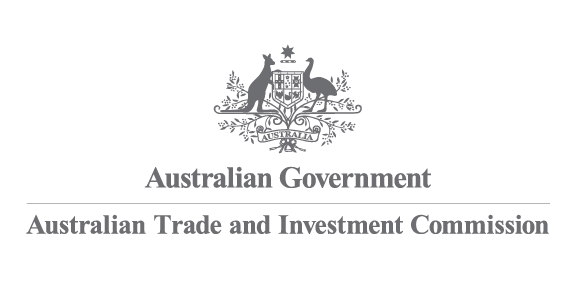The coronavirus (or COVID-19) has been making headlines around the world since January of 2020. Since the virus was initially discovered in Wuhan, China, it has gone on to trigger the World Health Organization (WHO) to declare a global pandemic as it continues to spread across the world.
When you’re reading about coronavirus in the news, you might come across a few terms that are a little confusing. Here is a glossary of some of the most commonly used terms surrounding coronavirus that will help clear up any potential confusion.
Coronavirus
While the term ‘coronavirus’ has become the default name for the current virus behind the global pandemic, the term actually relates to a group of viruses that affect birds and mammals, usually in the respiratory tract. Sometimes, a coronavirus mutates and affects humans. Other coronaviruses include the common cold, Middle East Respiratory Syndrome (MERS) and Severe Acute Respiratory Syndrome (SARS).
COVID-19
COVID-19 is the name given to the disease behind the current global pandemic. It was caused by a new strain of coronavirus (called Sars-CoV-2, or severe acute respiratory syndrome coronavirus 2) that was first detected in Wuhan, China.
Epidemic
The World Health Organization describes an epidemic as “the occurrence in a community or region of cases of an illness … clearly in excess of normal expectancy”. In other words, an epidemic refers to a disease that is both regional and unexpected in terms of infection rates.
Pandemic
A pandemic is a global epidemic. The declaration of a pandemic means that a disease has led to a sudden increase in infections in several countries around the world.
A pandemic was declared by the World Health Organisation on 11 March 2020 and was the first pandemic to be caused by a coronavirus.
Just note that while ‘pandemic’ may be a scary word, it does not mean that a disease or illness is any more deadly.
Incubation period
The incubation period of a disease is the length of time it takes before symptoms begin to appear. In the case of COVID-19, medical opinion from the Centers for Disease Control and Prevention (CDC) in the US states that this new virus has an incubation period of between 2 and 14 days, with 5 days the average length of time before symptoms appear. However, while no symptoms may appear during this time, a person is still capable of transmitting the infection.
For more information on the symptoms of COVID-19 and when to seek medical attention, check out the Department of Health website.
State of emergency/public health emergency
A state of emergency is called in order to give governments emergency powers that they would not normally have during times of natural disaster, medical epidemics or pandemics or other critical situations. With regards to COVID-19, you might see this referred to as a public health emergency.
Since 12 March 2020, a state of emergency/public health emergency has been called in the majority of Australian states, giving the state governments the power to implement methods to contain the spread of COVID-19.
Containment
This is the process by which governments and medical bodies try to limit the spread of the virus. The Australian Government is regularly taking steps to contain the virus – you can stay up-to-date with key updates here.
Non-essential gathering
What makes a gathering ‘non-essential’? Basically, if people are getting together for a reason that’s not essential to daily life, it’s considered non-essential. This includes things like entertainment and sporting matches. Public transport facilities, medical and health services, supermarkets and educational institutions are not considered non-essential.
Social distancing
Social distancing is a form of containment that has been strongly advised by governments around the world, regardless of whether or not you have been infected or show any symptoms. In Australia, the federal government has recommended that people stop shaking hands, practise good hygiene, avoid densely packed areas, and try to maintain a space of 1.5 metres between others when in public.
That being said, social distancing still permits individuals to attend work, university or school as required.
Self-isolation
While social distancing affects everyone, regardless of whether or not they have come into contact with the virus, self-isolation only affects those who have been exposed to the virus or have arrived in Australia from midnight 15 March 2020.
If you sit in either of these categories, you must remain in self-isolation for 14 days in order to contain the spread of the virus. This means that you will no longer be able to attend work, school, or university. As of midnight 28 March 2020, overseas arrivals will be quarantined in hotels. If you live with others, you should wear a face mask when in communal areas, use a separate bathroom (if possible), and avoid sharing a bed with your partner.
Check out the Department of Health website for more information.
Flattening the curve
As a disease spreads rapidly, its impact on public health resources becomes more intense as more people become infected with the illness and require healthcare. This can sometimes mean public healthcare becomes overwhelmed by the demand for care, leading to some not getting the required medical attention.
However, reducing transmission of the disease through social distancing and self-isolation means there will be less of a dramatic spike in the infection rate. The term ‘flattening the curve’ relates to cases of infection plotted on a graph. Flattening the curve would result in less strain on public health resources, allowing more people to get the required medical care.
Study in Australia is the Australian Government’s official resource for international students. Study in Australia partners are here to support the Australian international education community. Whether you’re in Australia or abroad, visit www.studyinaustralia.gov.au or follow the Study In Australia social media channels for up-to-date COVID-19 information for international students.
Study in Australia Facebook
Study in Australia Instagram
Study in Australia Weibo (澳大利亚政府教育推广官方微博)
Study in Australia WeChat (澳大利亚政府教育资讯)






